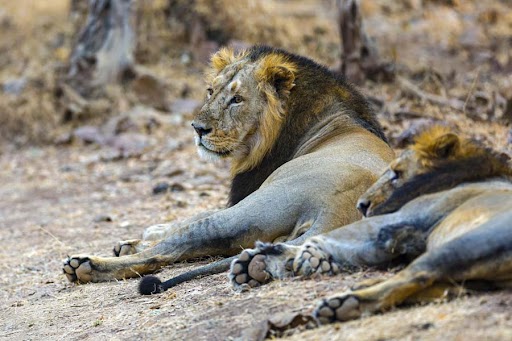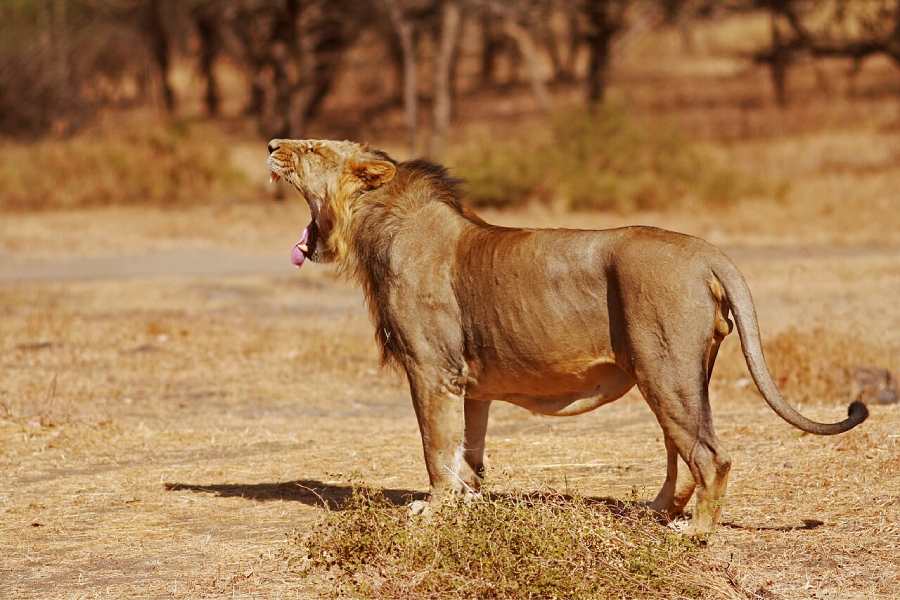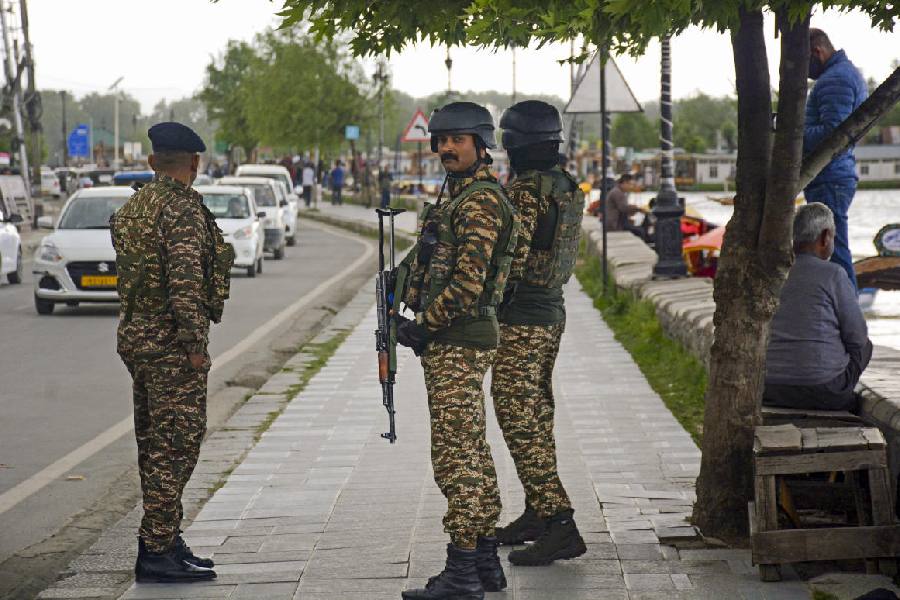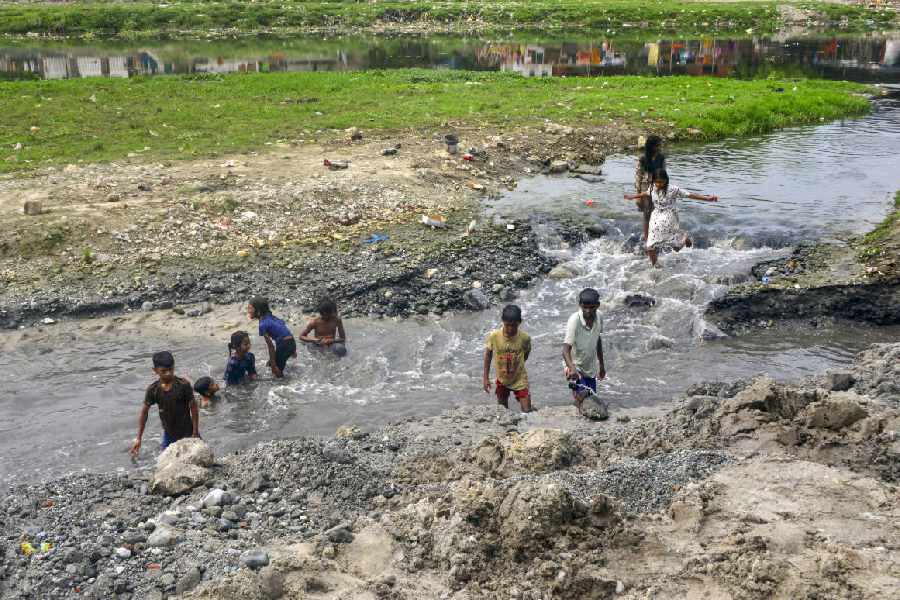Despite conservation wins, the Asiatic lion's future remains fragile amid habitat isolation and human impact.
The king of the jungle is running out of space to rule.
In the last five years, 669 Asiatic lions have died. The Indian government, in a statement to the Rajya Sabha, confirmed these deaths but clarified that none resulted from poaching.
Causes ranged from old age and illness to electrocution, falls into open wells, and territorial fights.

A lioness with her cub at Gir National Park. PTI
And now, in a new reality check, the International Union for Conservation of Nature (IUCN) has released its first Green Status assessment for the lion (Panthera leo), classifying the species as “Largely Depleted.”
This designation was announced on March 27, 2025.
"Today’s Green Status assessment shows that human impacts are preventing the lion from being fully ecologically functional across its range, as the species declines across large areas and is extinct from North Africa and Southwest Asia," the IUCN stated.
The numbers tell a complicated story. In June 2020, India recorded 674 Asiatic lions, up from 523 in 2015. Their distribution had expanded too from 22,000 sq km in 2015 to 30,000 sq. km in 2020.

A male lion scent marking his territory in Gir Forest. Wikipedia/ Sumeet Moghe
In 2024 and 2025, lions began swimming to Diu Island, separated from the mainland of Gujarat by a narrow channel.
At the request of the Diu administration, these individuals were moved to Gujarat due to concerns about potential disruption to human life, though conservationists argued that the relocation was unnecessary.

An Asiatic lioness. A. J. T. Johnsingh, WWF-India and NCF.
The Gujarat government insists that the Gir forest, the lions’ only natural habitat, has a sufficient prey base, and in February, Union environment minister Bhupender Yadav reaffirmed this claim.
Yet, despite these gains, the deaths keep mounting and experts have long warned that Gir is a ticking time bomb.
Experts have demanded translocation of lions in India as the big cats have been geographically isolated in Gir. A second home would protect the lion population from extinction in case of an epidemic, an unexpected decline in prey or natural calamities.
The isolation problem
The worst fears nearly came true in 2018, when the canine distemper virus (CDV) killed 27 lions in Gir and forced the quarantine of 37 more. It was a near miss. Yet, despite the Supreme Court’s 2013 order to relocate lions to Kuno National Park in Madhya Pradesh within six months, a decade has passed and the lions are still in Gujarat.

Lions at Gir National Park. PTI.
Instead, Kuno got cheetahs.
Meanwhile, the Gujarat government has proposed an alternative: Barda Wildlife Sanctuary, around 100 km from Gir, as a potential new home for a small population of lions. In 2022, former minister of state for environment Ashwini Kumar Choubey confirmed that Barda could support 40 adult and sub-adult lions.
But Barda is still within Gujarat and keeping the entire Asiatic lion population inside one state defeats the purpose of translocation.
What IUCN’s new assessment means for lions worldwide

Six lion brothers resting in the African Savanna.Shutterstock.
Until recently, lions were categorised into two subspecies: the African lion (Panthera leo leo) and the Asiatic lion (Panthera leo persica). However, the IUCN SSC Cat Specialist Group has since revised this, now grouping lions into:
Panthera leo leo (Central Africa, West Africa, and Asia—including India’s Asiatic lions)
Panthera leo melanochaita (Southern and East Africa)
Regardless of classification, the message is the same: lions are in trouble.
Once spread across Europe, Africa, and Asia, the lion’s range has been shattered by human expansion, habitat loss, and fragmented populations.
North Africa and Southwest Asia have already lost their lions.










